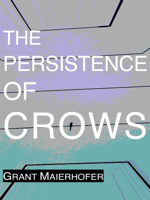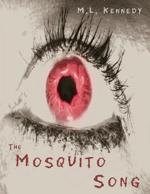
There is a scene in American Beauty in which a middle-aged Kevin Spacey finally realizes his fantasy of bedding the high school cheerleader. It’s very near the climax of the film and the culmination of Spacey’s new found discovery of freedom, after twenty years of stifling conformity in the excruciatingly pleasant suburb he has been residing in.
In that darkened room, as Spacey slowly undresses the cheerleader, fully realizing his youth and virility, he at the same time becomes the very sign of the moral decay rotting beneath the neighborhood that he had been trying to escape from.
The film itself is what I like to call, for practical purposes, a “contemporary” example of an old genre, the noir. The basic theme that the noir revolves around is that there is more to things than meets the eye. In most cases, it is the spelling out of a social or moral hypocrisy, the revelation of a truth masked by deceiving appearances.
By “contemporary”, I mean a shift in focus from crime to the social milieu. For example, in early noirs such as The Maltese Falcon or even as recent as the throwback attempts (or “neo-noir” as some term it) of Chinatown or L.A. Confidential, the focus is a crime committed, and the film is a whodunnit, with the backdrop of the before mentioned social hypocrisy context.
More recently, the “contemporary” noir films have moved that backdrop into the foreground. Thus, instead of a crime suspense thriller, these films focus on the neat, manicured lawns of the peaceful suburb, the perfect picture of the American dream, with a happy family with pets, the nine to five job of the husband, the perfect housekeeper of a wife and contrasts this image of artificial perfection with the underlying disturbing truth, the opposite of surface appearances.
In the case of American Beauty, underlying the appearance of the blissful community are failing marriages, drugs, homophobia, and at the very end, murder. Instead of acknowledging human weakness, dealing with it in an open manner, there is instead a puritanical devotion to maintaining the image of propriety and the willful repression of desires.
We are meant to identify with Kevin Spacey’s character. He is a sort of in-between character, walking the edge dividing the “clean” side of the neighborhood from the “dark” side. As mentioned before, in going after the cheerleader, he crosses over to that “dark” side, but it’s only a for a few moments. He eventually realizes his mistake and stops.
The protagonist in the noirs are usually almost always these in-between types. They are the ones that are from the “clean” side, through which we are introduced first to the seemingly happy appearance of a community and then to the shockingly disturbing truth underneath, as they venture forth and dig deeper down. We see this as well with earlier versions of the “contemporary” noir.
In David Lynch’s Blue Velvet, we see the world through a go-between, though in this example of the contemporary noir, it is not a private eye, but an inhabitant of the “normal” world who becomes involved with the seedy underside of the town. From the rows of red roses and white picket fences under a pure blue sky, the Kyle Maclachlan character is drawn into the dark recesses of Dennis Hopper’s chaotic world.
Border characters such as Kyle Maclachlan’s character in Blue Velvet are the links that relate the two worlds to each other, drawing them together. The use of the border character as the protagonist, the eyes through which we view the film’s world, is pretty much standard throughout such contemporary noirs.








